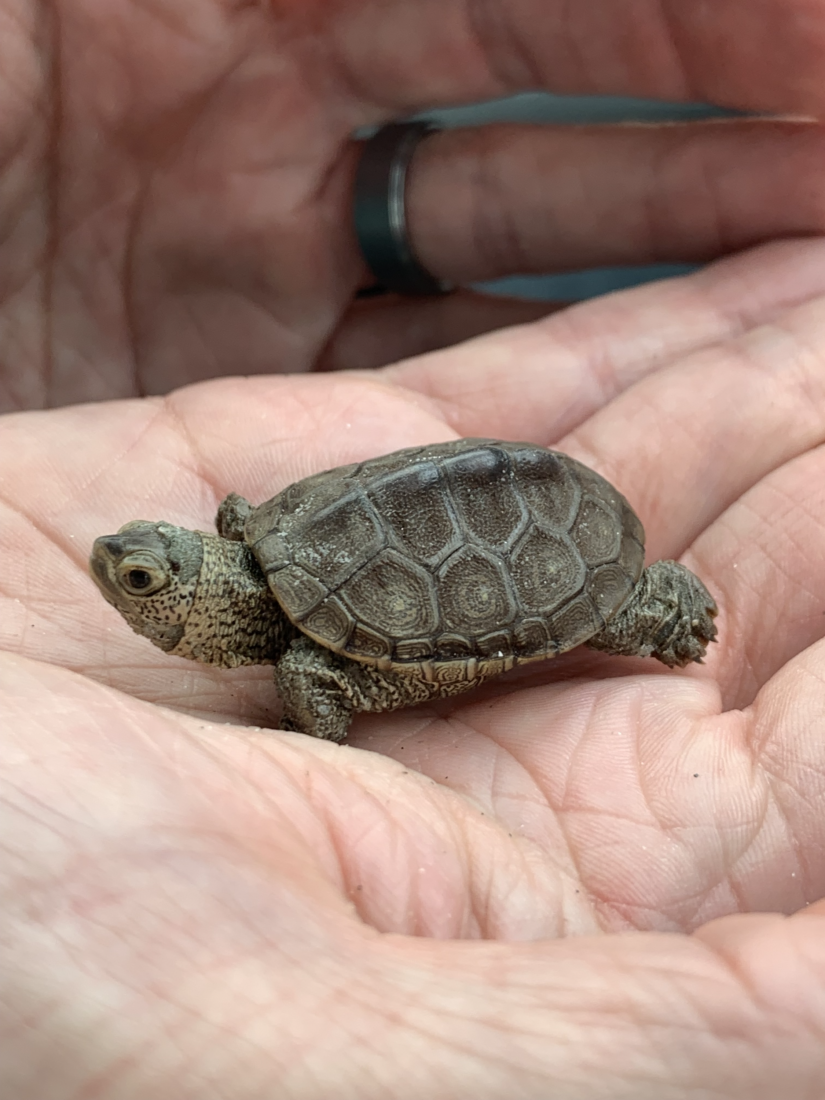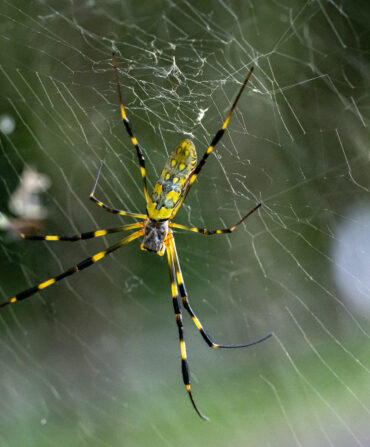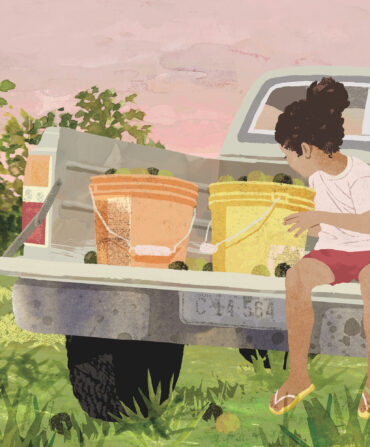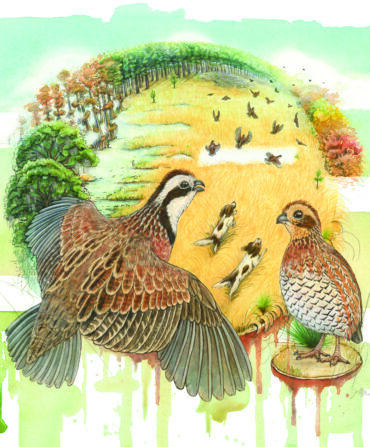Back in late March, my family and I were strolling along our favorite seaside hangout near Breach Inlet, a deep, brackish channel that separates the two South Carolina barrier islands of Isle of Palms and Sullivans Island. It was dead-low tide on an unseasonably warm afternoon, and the locals were making the most of it: Toddlers splashed in ankle-deep tidal pools, a handful of dogs chased balls, and a few hopeful fishermen cast their lines into the murky inlet waters.
I was scanning the surf for dolphins and scooping up shells to add to my collection when I stopped in my tracks. About a foot ahead of me was a small lump in the sand…with a tiny reptilian head peeking out. I peered closer and could make out an inch-long ridged shell patterned with pale blue and olive green diamonds.

My first thought was (gasp!) a baby sea turtle! But surely not—it was much too early in the season for hatchlings. And the minuscule, scaly front feet were webbed claws rather than flippers. The creature craned its long (by palm-sized standards) neck out of its sandy burrow, showing off dark freckles peppered along its pale skin.
After some Googling and a chat with herpetology friends, I confirmed I’d found what G&G assistant editor Lindsey Liles wrote about in our latest issue: “the continent’s only turtles that live in such brackish estuaries [and] once abundantly roamed the tidal creeks, pluff mud, and spartina grasses along the Eastern Seaboard.” The “jewel of the marsh,” a diamondback terrapin.
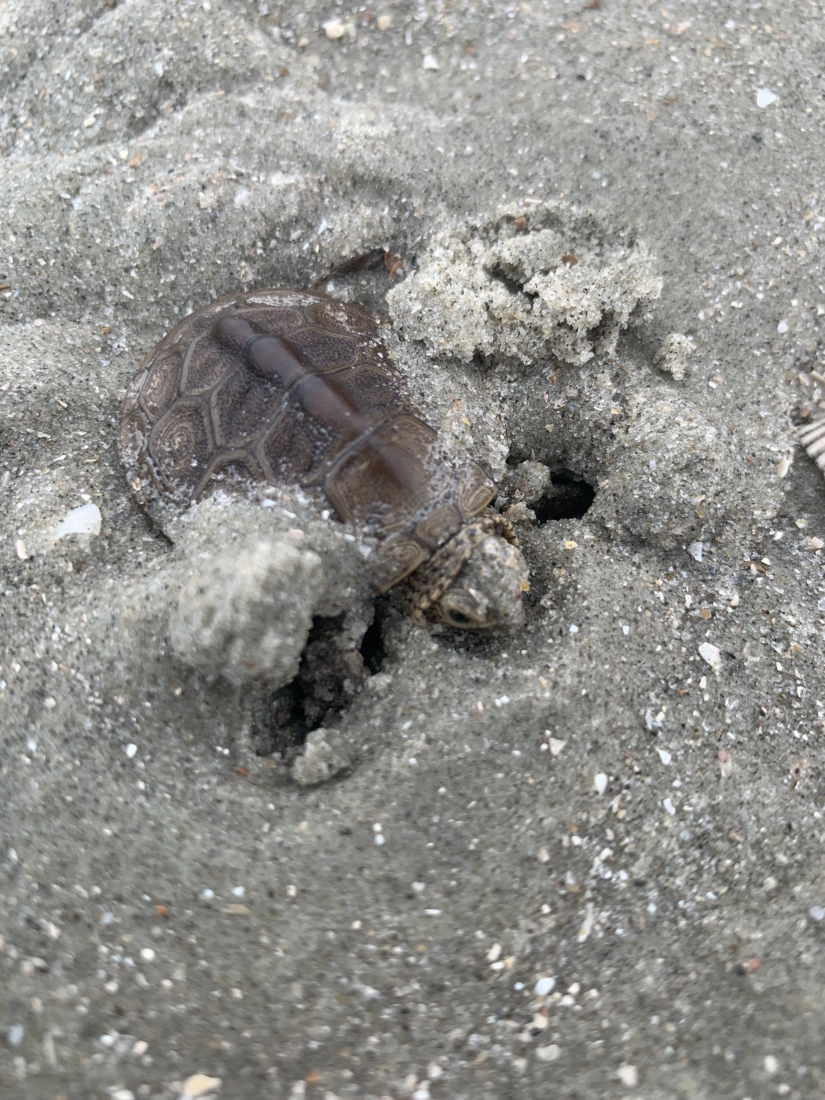
Growing up in the lush mountains of Virginia, I’ve always had a soft spot for reptiles. I’ve helped countless Eastern box turtles cross busy roads and even kept a few painted turtles as pets. And here in South Carolina, it’s common to see yellow-bellied sliders periscoping their heads out of neighborhood lakes, curiously eyeing passers-by or scuttling across the walking paths.
This itty bitty turtle was obviously in the wrong place at the wrong time. It’d have to dodge peckish gulls, ball-retrieving dogs, and cavorting children just to make it to the shoreline and still have to find its way back to the high marsh, the portion of the marsh that floods only at high tide—a vital habitat for juvenile terrapins. I looked down at the animal and back at the quarter mile or so before the inlet curled into the marsh beyond.
During my quick research I’d discovered that these little terrapins are considered a “high priority species” for conservation, according to the South Carolina Department of Natural Resources, which has been ramping up efforts to monitor and manage them. The species’ population has been in steep decline largely due to human activity: harvesting for consumption (only regulated since the early 2000s), car strikes, crab traps, and habitat loss. I made up my mind and decided my sandy friend needed a VIP escort to a safer location.
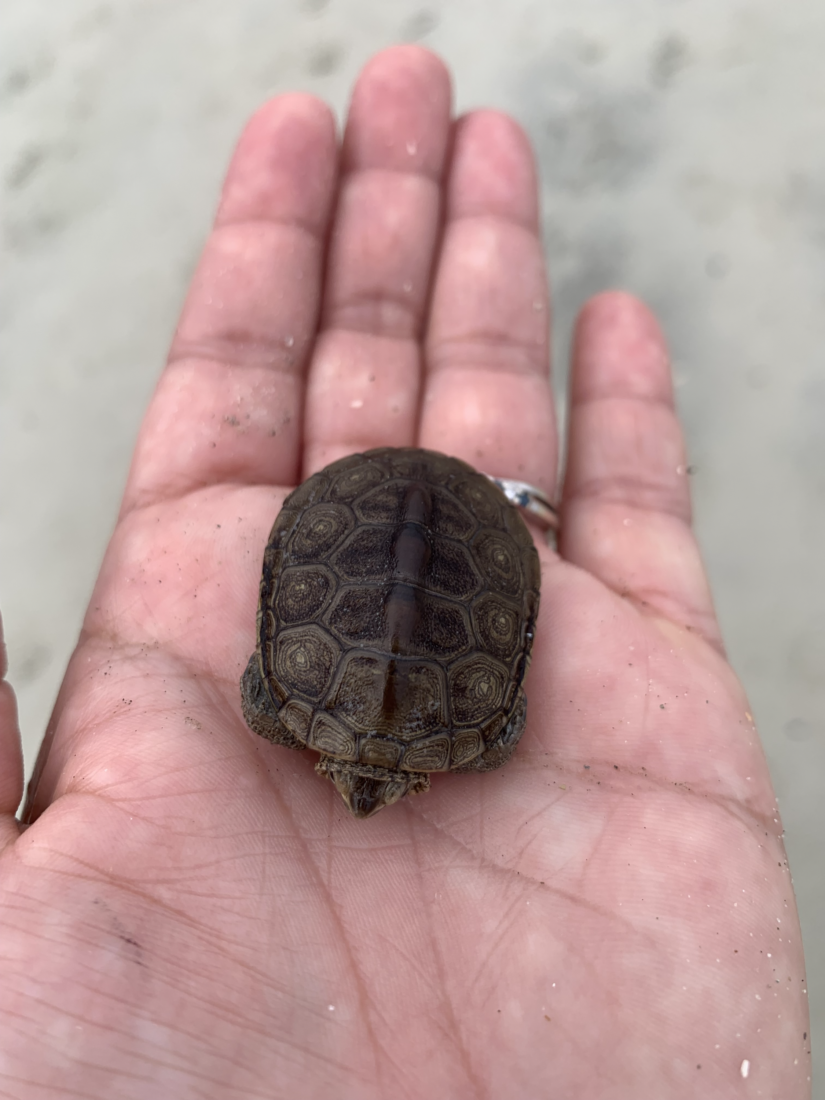
I gently scooped the turtle from the sand and placed it in our sand pail. We carried it about a half-mile around the inlet, close to the marsh, and set the pail on its side to give the animal a moment to get its bearings. Off it scrambled, splashing into the tea-colored brackish water without a backward glance. Later that day, I reported the encounter to the SCDNR to help with their research. Curious if I’d made the right decision in intervening, I also reached out to Andrew Grosse, the department’s state herpetologist, who gave me his blessing and stressed the importance of the reptiles’ marshy home.
“[Juvenile terrapins] will bury in the mud, use crab holes, and hide under mats of Spartina at low tide. At high tide, as the high marsh floods, they can move around more easily and forage for small invertebrates,” he told me. “The importance of high marsh habitat cannot be overstated, as it provides a nursery for hatchling and juvenile terrapins until they are large enough to use the more permanent tidal creeks.”
A few months after my “Great Terrapin Adventure,” I was leaning over the rails at a local dock when I spied an adult diamondback terrapin paddling in the clear, shallow water along the shoreline. It was much larger than the first one I’d met, stretching a good half-foot in length from its beaky snout to the end of its colorful carapace. The marina was only a few miles from the marsh where we’d released the youngster—was this a distant relative? I’d never know, but I mentally saluted it anyway.
Editor’s note: If you find a diamondback terrapin and are unsure if it’s injured or should be relocated, please call your local natural resources department. And even though it might be tempting to keep one as a pet, they are best left in the wild.


